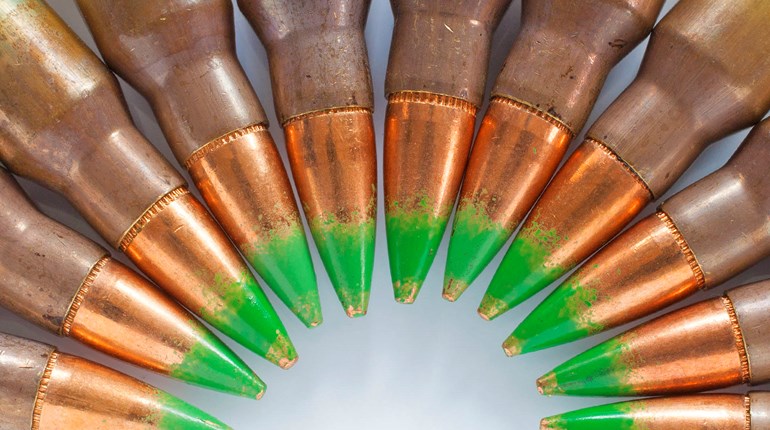
"And the worst policy is to attack cities. Attack cities only when there is no alternative ... The General, unable to control his impatience, will order his troops to swarm up the wall like ants, with the result that one-third of them will be killed without taking the city. Such is the calamity of attacking cities.” — Sun Tzu
I hated geometry in high school. Now I know why. Geometry kills.
Urban warfare is undoubtedly the most bloody and challenging form of battle, bar none. It’s a 3-D maze of doom, where geometry rules. Every angle is a threat: Death by sniper, booby trap or IED lurks around every corner, from every rooftop, across every threshold. Throughout history, names like Stalingrad, Manila, Hue City, Mogadishu and Fallujah have given successive generations of fighting men a baptism by fire that made it clear there are no good options when it comes to taking a heavily populated area.
Basically, the generals have two options when faced with an urban landscape: Clear buildings street by street, or bomb the city into oblivion. The first is terribly costly in time and blood, the other essentially liberates the city by destroying it. When large numbers of non-combatants are involved, it’s even more of a challenge.
There’s another maxim common in military circles:
“Generals always fight the last war.”
In Iraq, that’s exactly what is happening. In the fight to liberate Mosul, outdated tactics of urban warfare are getting people killed every day.
In 2014, Mosul was conquered with astonishing speed by about 1,500 jihadi zealots who swore allegiance to ISIS. (It’s important to note here that Mosul is a city of 2 million—yet another good reason why every man should have a modern battle rifle and know how to use it!)
The Iraqi army dropped everything and ran, leaving billions of dollars of high-tech U.S. weaponry and materiel to their foes and making ISIS the best-equipped terrorist organization in history—giving them a great recruiting tool to lure others to their newly formed “Caliphate.”
Two years and undoubtedly many motivational speeches later, the Iraqi army is back. “Operation We are Returning” is well underway to retake Mosul, though it’s not going near as well as they had hoped. Between the Iraqis, the Kurds, a few thousand Americans and the Popular Mobilization Units engaged in this fight, the “coalition” has had upwards of 100,000 men fighting to dislodge somewhere between 5,000 and 6,000 enemy fighters. As of this writing, more than two months in, the gains have been costly. Almost 2,000 Iraqi soldiers died in the fighting in November 2016 alone—that’s nearly half as many as the U.S. lost in Iraq in more than 10 years of war. The civilian toll has also been staggering—more than 1,800 killed or wounded in Mosul in November, and to date more than 130,000 driven from their homes to refugee camps, mostly situated in Kurdistan.
As the Iraqi forces push into Mosul proper, the fighting has become bloody house-to-house slaughter, making it clear that each and every Daesh fighter intends to die taking as many Iraqi soldiers and civilians with him as possible.
Even if the terrorists wanted to withdraw, the coalition forces have now encircled the city, cutting off any means of escape. This move could eventually draw out the battle and cost many lives. It might be better to give them an opportunity to escape and then kill them in the desert.
This is just one example of how the fight in Mosul is highlighting examples of “last war thinking” that could teach future leaders important lessons on winning wars in the 21st century.
Low Hanging Fruit
We need to change the way we help our allies. Instead of sending them billions of dollars in top-shelf technology and weapons—much of which, as we have seen, may one day end up shooting back at us—we should be looking for clever, off-the shelf solutions to help our allies fight smarter with the weapons they already have.
ISIS has proven to be an unspeakably evil foe, yet savvy nonetheless. They’ve used commercially available drones to perform reconnaissance, guide vehicle-borne IEDs and even deliver small amounts of explosives with precision.
The United States is providing lots of air cover for the advancing Iraqi special forces units pushing into Mosul from the east, and undoubtedly has eyes in the sky watching the battle unfold 24/7. U.S. advisors are on the ground with Iraqi commanders to relay that intelligence as quickly as possible. But when our NRA News team was with Iraqi special operations troops near the fighting front in November, it was clear the men slogging it out in house-to-house combat were getting little, if any, benefit from that arrangement. It just wasn’t efficient enough to warn them when, for example, there was an enemy car bomb racing toward their position.
Daesh have employed more than 800 VBIED’s so far in Mosul, a weapon that is proving to be one of the biggest contributors to Iraqi casualties to date. American air power has been able to thwart some of these attacks, but many of them happen so quickly that even if they are spotted by a U.S. drone, we can’t react quickly enough.
Though by any measure what is happening in Mosul is horrific, it could present an opportunity—a laboratory of sorts. A chance to completely remake the concept of urban warfare.
One hellfire missile costs U.S. taxpayers about $70,000. So far, Operation Inherent Resolve, the U.S. operation targeting ISIS, has included more than 12,000 strikes. Get out your calculators, folks: That’s serious cash money.
For less than $1 million, the U.S. could buy off-the-shelf drone technology and outfit every platoon in the fight with a commercial video drone. These could be used as quasi-expendable lifesavers to do short-range reconnaissance and offer early warning capability that would undoubtedly save lives. In addition, without too much difficulty, I believe we could develop an all-terrain man-packable robot with cameras and sensors that soldiers could use to increase their awareness and create an intelligence-saturated bubble around the troops doing the fighting. Indeed, there are already robots like this in use by military, EOD and police forces around the world. Dallas police used one of these robots in a creative way in 2016 to kill Micah Xavier Johnson, the man who ambushed and killed five officers and wounded nine more. Dallas EOD used their bomb-disposal robot to deliver some sandwiches to Johnson, along with a side of C-4 that was used to end the standoff.
With beyond-the-pale brutality and opportunistic thinking, ISIS fought the much larger Iraqi army to a standstill in the closing days of 2016. Now the attack is on again, and the good guys are seeing some success. But instead of re-enacting the siege of Stalingrad, we should be tapping Silicon Valley to save lives by leveraging cutting-edge technology. If this was done in lieu of flooding the region with arms and ammo, we’d make it less likely our own sons and daughters will one day be dodging American-made bullets fired by American-made guns.
What’s not to like about that?


































